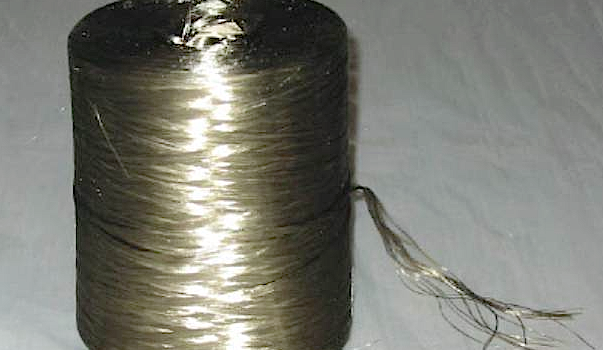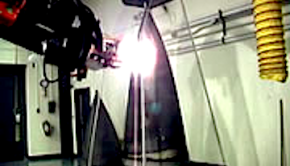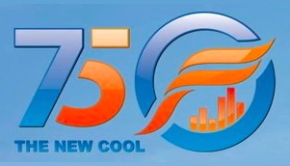Neuvokas Basalt Rebar Lighter, Stronger, Same Cost As Steel
November 6th, 2014 by Sandy Dechert
(This post is part of our series on Midwest Cleantech Open winners.)
Fiber reinforcing bars have been around since the old Soviet Union sought a source of fiber for ballistic-resistant textiles. Peaceful uses started in Japan in the 1980s and moved to Canada before catching on in the States. Despite their advantages of corrosion resistance and nonconductivity, fiber rebars have not yet been cost-competitive with traditional steel rebar for strengthening concrete. This may be about to change, according to Neuvokas Corporation, which has begun to manufacture FRP rebar out of volcanic rock and just won a Sustainability award for its basalt rebar at the Midwest Cleantech Open.
 An advanced materials manufacturer in Calumet, Michigan, Neuvokas (Finnish for “resourceful”) blends purchased fiber and internally formulated resin at high speeds to produce lightweight basalt fiber-reinforced polymer that is cost-competitive with traditional steel counterparts and also preferable to ordinary fiber rebar. Similar in chemical composition to glass fiber, basalt fiber is stronger and highly resists alkaline, acidic, and salt deterioration. Basalt rebar can also tolerate higher temperatures and more abrasion. Lack of developed standards for the product have held up its general institution.
An advanced materials manufacturer in Calumet, Michigan, Neuvokas (Finnish for “resourceful”) blends purchased fiber and internally formulated resin at high speeds to produce lightweight basalt fiber-reinforced polymer that is cost-competitive with traditional steel counterparts and also preferable to ordinary fiber rebar. Similar in chemical composition to glass fiber, basalt fiber is stronger and highly resists alkaline, acidic, and salt deterioration. Basalt rebar can also tolerate higher temperatures and more abrasion. Lack of developed standards for the product have held up its general institution.
Here are some of the other advantages of the Neuvokas product:
- 100X increase in production speeds of basalt rebar compared to current FRP production,
- Price parity with steel,
- Immunity to rust,
- Increased tensile strength,
- 7X weight reduction with basalt rebar, and
- Capability of using 30% less concrete.
Neuvokas has two patents pending and funding for 5 utility patents, in addition to formulas and other trade secrets in the basalt rebar sector.
The global rebar market is $164 billion. The company’s first target market is private parking lots on the US Gulf Coast. It is initially offering 3/8” diameter 10’, 20’, and 40’ BFRP rebar as a direct replacement for ½” steel. As well as shipped orders, Neuvokas product is under purchase orders and letters of intent to six companies, two of which may involve Canadian and European distribution of Neuvokas basalt rebar.
The company has raised over $2.2M in private equity, loans, and grants. Its five-month Cleantech Accelerator experience and acquisition of a subsequent Midwest CTO award for Sustainability position the company nicely for future development.
Keep up to date with all the hottest cleantech news by subscribing to our (free) cleantech newsletter, or keep an eye on sector-specific news by getting our (also free) solar energy newsletter, electric vehicle newsletter, or wind energy newsletter.
-
Omega Centauri
-
Bob_Wallace
-
tibi stibi
-
-
Offgridman
-
http://www.michaeljberndtson.com/ Michael Berndtson

























